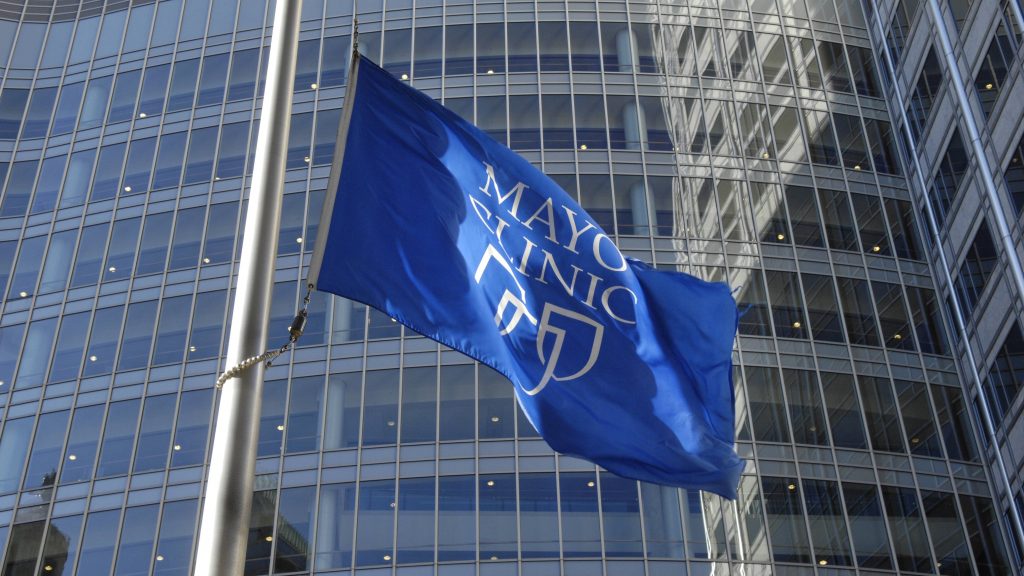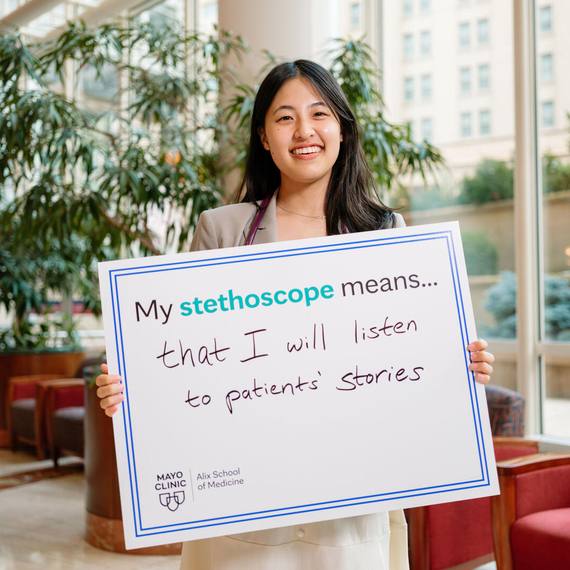-
Arizona
MEETING THE CHALLENGES OF A HISTORIC YEAR: 2020 Mayo Clinic Performance Highlights

A global leader in responding to the COVID-19 pandemic
- Mayo Clinic developed and adopted treatments, therapies and protocols that have improved outcomes for patients and reduced mortality rates. Mortality rates for patients with COVID-19 who received care at Mayo Clinic are significantly lower than the national rates.
- Mayo Clinic Laboratories developed highly accurate diagnostic and antibody tests, performing more than 3.1 million COVID-19 tests for patients nationwide. Fourteen new COVID-19-related tests were launched, and more than 100 new tests of all types were provided to patients and clients in 60 countries.
- Mayo Clinic cofounded the national COVID-19 Health Care Coalition, was the lead institution for the U.S. Expanded Access Program for convalescent plasma to treat critically ill patients with COVID-19, and it administered more monoclonal antibody treatments than any other health care organization, demonstrating a significant decrease in hospitalization rates and mortality.
Pandemic response drives transformation in how health care is delivered
- Mayo Clinic Platform and the Center for Digital Health enabled exponential growth of telemedicine and remote care, artificial intelligence applied to patient care, and data analytics to improve healthcare outcomes.
- Mayo Clinic teams provided essential remote care through 1.2 million telephone and video visits and monitored more than 9,200 COVID-19 patients through our remote monitoring complex care program, which allowed for patients with even moderate to severe symptoms to be cared for safely at home.
- Mayo’s Advanced Care at Home Model of Care was launched in June 2020 with Medically Home to provide high-acuity care at home under the direction of Mayo Clinic physicians for patients who otherwise would be hospitalized. The Model of Care, introduced in northwest Wisconsin and Jacksonville, Florida, offers comprehensive health care services including skilled nursing, medications, laboratory and imaging services, behavioral health, and rehabilitation services from a network of paramedics, nurses, and support team members.
Mayo Clinic in Rochester named No. 1 hospital by U.S. News & World Report
- Ranking by U.S. News & World Report marks five consecutive years that Mayo Clinic in Rochester has held that distinction. Mayo continues to rank No. 1 in more medical specialty areas than any other U.S. medical center.
- Mayo Clinic Arizona was ranked the No. 1 hospital in that state and No. 16 in the “Best Hospitals Honor Roll” of the nation’s top hospitals.
- U.S. News ranked Mayo Clinic Florida as the No. 1 hospital in that state.
- Mayo Clinic Health System in Eau Claire was recognized as a "Best Regional Hospital" in Northwest Wisconsin. Mayo Clinic Health System—Franciscan Healthcare in La Crosse was ranked as a "Best Regional Hospital" in Southwest Wisconsin.
Financial performance remains strong despite pandemic-related disruptions
- The Consolidated Financial Report for 2020 shows Mayo Clinic’s total revenue was $13.9 billion, 1.5% higher than in 2019.
- Net operating income was $727 million and operating margin was 5.2%.
- Net medical service revenue was down 0.9% from 2019, but revenue from diversified sources such as Mayo Clinic Laboratories and Mayo Clinic Ventures and Business Development was $1.53 billion, an increase of 19%, and investment income supporting operations grew by 9.1%.
- Mayo Clinic returned $156 million of federal CARES Act funding in December. Mayo retained $182 million of CARES Act funding received during the early months of the pandemic. This funding, as well as state emergency relief funding, was vital to help offset a portion of lost revenue experienced early in the pandemic as well as pay for major investments in testing and research, protective and medical equipment, and other unanticipated costs.
Generous benefactors and donors increase their essential support
- Support from generous patients and other individuals, foundations, corporations, and organizations is essential to Mayo Clinic’s ability to carry out its mission.
- Philanthropic gifts of outright support from benefactors totaled $587 million in 2020, an increase of 6.9% over 2019.
- Total philanthropy secured in 2020 was $1 billion, including future gift commitments.
Commitment to patients and communities during a time of unprecedented need
- More than 1.3 million patients, from every state and nearly 130 countries, received care at Mayo Clinic in 2020.
- More than 71,000 people, including more than 7,000 physicians and scientists, are on staff at Mayo Clinic and advance its mission to improve the lives and health of people worldwide.
- Mayo Clinic, a nonprofit organization, is a major taxpayer in the communities it serves, as well as at the state and national levels. In 2020, it paid a total of $178 million in taxes, including $93 million in MinnesotaCare taxes, $28 million in real property and business personal property taxes, $40 million in business income taxes, and $17 million in sales and use taxes.
- In keeping with its humanitarian mission, Mayo Clinic provided $629 million in uncompensated care in 2020, including $89 million in charity care and $540 million in unpaid portions of Medicaid and programs for patients in need.
- In 2020, 46.9 % of Mayo Clinic’s gross practice revenue came from services furnished to Medicare beneficiaries. On average, Medicare reimbursement covered 53.1% of the actual cost of treating patients covered by the program.
- Mayo redoubled its community outreach and direct support efforts, providing more than $8 million in contributions to community organizations.
- $100 million over 10 years to end racism and promote health equity at Mayo and nationwide. The campaign is an overarching Mayo Clinic priority.
Vital investments in research and education
- Mayo Clinic College of Medicine and Science was $1.312 billion, compared with $1.261 billion in 2019. Mayo Clinic published 737 scientific publications on COVID-19 in 2020.
- The pandemic has presented an unprecedented opportunity for the College of Medicine and Science and its five schools for training in telemedicine and virtual care, public health pandemic response, medical ethics, and health disparities in minority populations.
Additional resources
###
Media contacts:
- Jay Furst, Mayo Clinic Public Affairs, newsbureau@mayo.edu
- Ginger Plumbo, Mayo Clinic Public Affairs, newsbureau@mayo.edu







